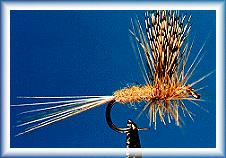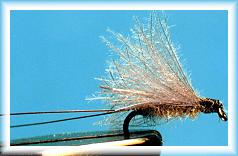Fly Tying for Beginners
An Introduction to Fly Tying
The normal evolution a fly fisher goes through usually includes fly tying sometime after the first year or two. Some take up fly tying to cut the costs of all the flies they seem to leave in bushes and trees everywhere they go. Others want to try it to increase their involvement in the finer details of the sport. No matter what your reasons are, tying flies seems to be an integrated part of the whole fly fishing picture.There have been perhaps more volumes of books and articles written on the art of fly tying than any other aspect of fly fishing. If you subscribe to any of the fly fishing magazines, you have encountered articles that included fly patterns. In fact, a few magazines are dedicated to the art of fly tying. Those magazines will enhance the information you find here and I encourage you to consider subscribing to one or two.
The first thing you need to know about tying your own flies is a little bit about the flies themselves. Some of you will probably know this information, but there are a few who don’t; so I’ll give you a refresher course.

 Dry flies are simply flies that float. They usually represent adult insects that are emerging (breaking out of their nymphal shuck), drying their wings so they can fly away, or returning to the water to lay eggs.
Since dry flies are the most fun to use (you get to see the fish take the fly), more fly patterns have been designed as dry patterns than any of the rest. Although some folks separate emerger flies from dries, since they usually float, I’ll include them with dries.
Thanks Al Campbell for the great instructions.
Ron
Dry flies are simply flies that float. They usually represent adult insects that are emerging (breaking out of their nymphal shuck), drying their wings so they can fly away, or returning to the water to lay eggs.
Since dry flies are the most fun to use (you get to see the fish take the fly), more fly patterns have been designed as dry patterns than any of the rest. Although some folks separate emerger flies from dries, since they usually float, I’ll include them with dries.
Thanks Al Campbell for the great instructions.
Ron



0 Comments:
Post a Comment
<< Home